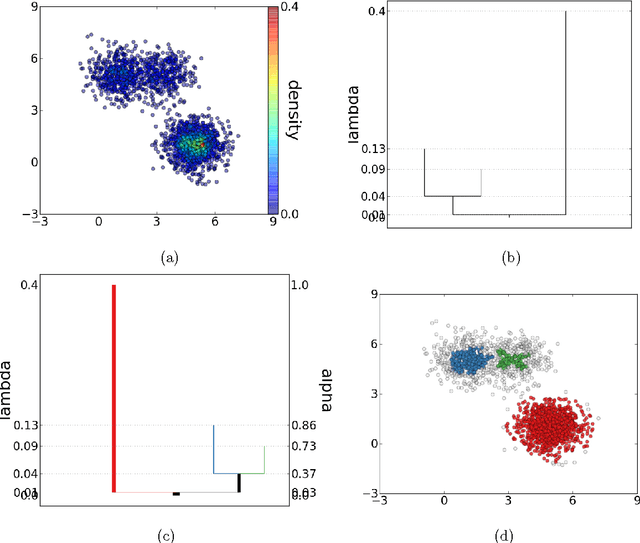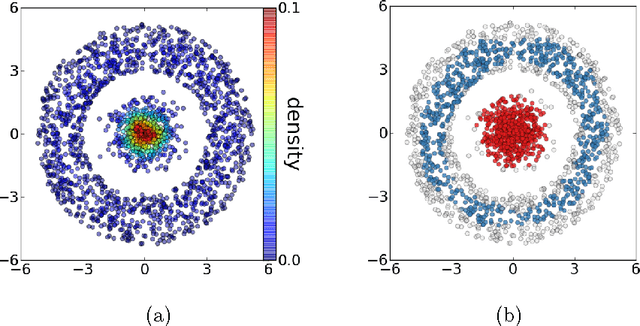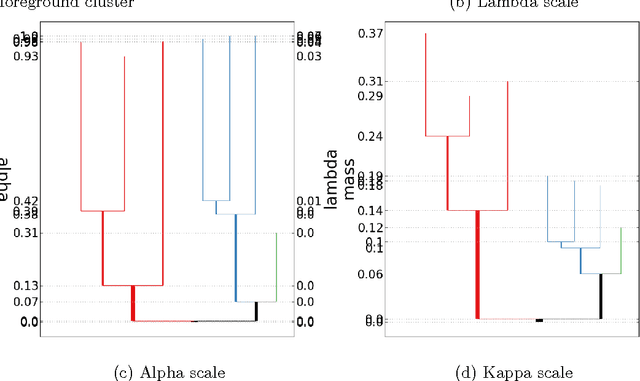DeBaCl: A Python Package for Interactive DEnsity-BAsed CLustering
Paper and Code
Jul 30, 2013



The level set tree approach of Hartigan (1975) provides a probabilistically based and highly interpretable encoding of the clustering behavior of a dataset. By representing the hierarchy of data modes as a dendrogram of the level sets of a density estimator, this approach offers many advantages for exploratory analysis and clustering, especially for complex and high-dimensional data. Several R packages exist for level set tree estimation, but their practical usefulness is limited by computational inefficiency, absence of interactive graphical capabilities and, from a theoretical perspective, reliance on asymptotic approximations. To make it easier for practitioners to capture the advantages of level set trees, we have written the Python package DeBaCl for DEnsity-BAsed CLustering. In this article we illustrate how DeBaCl's level set tree estimates can be used for difficult clustering tasks and interactive graphical data analysis. The package is intended to promote the practical use of level set trees through improvements in computational efficiency and a high degree of user customization. In addition, the flexible algorithms implemented in DeBaCl enjoy finite sample accuracy, as demonstrated in recent literature on density clustering. Finally, we show the level set tree framework can be easily extended to deal with functional data.
 Add to Chrome
Add to Chrome Add to Firefox
Add to Firefox Add to Edge
Add to Edge